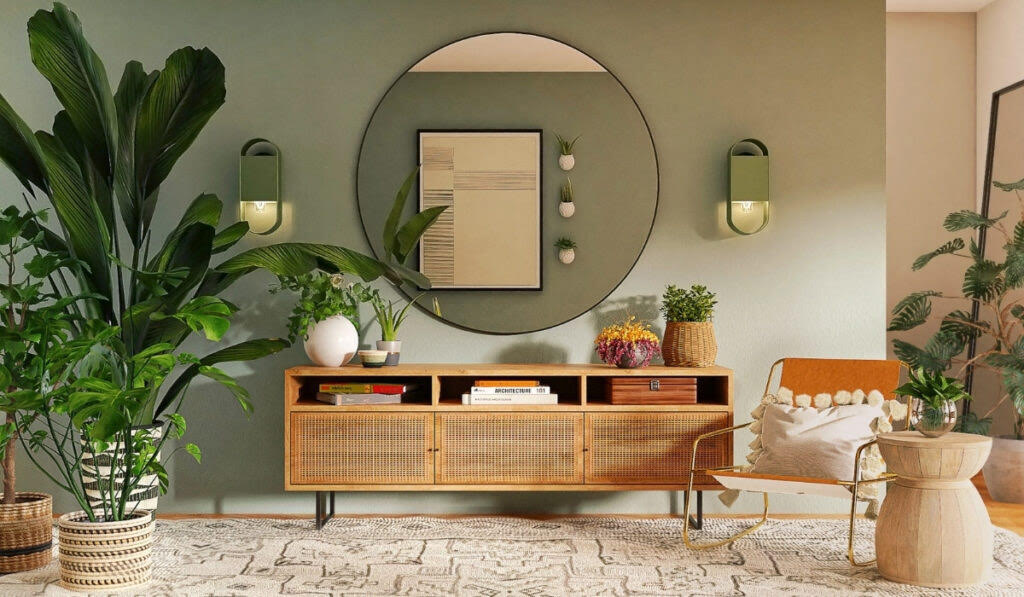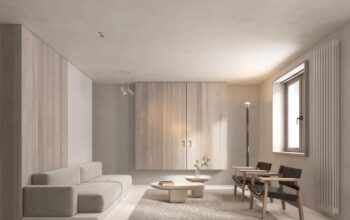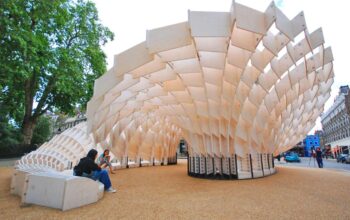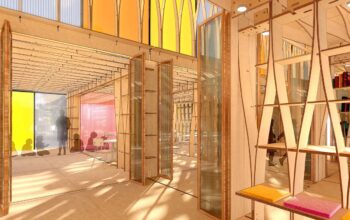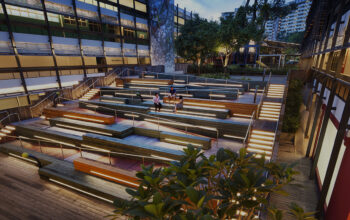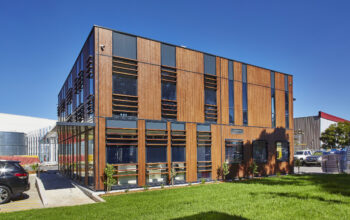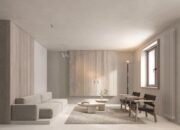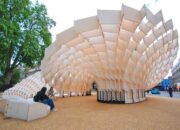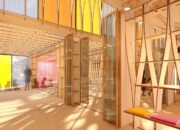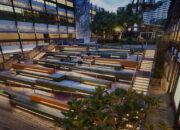The way we design and furnish our homes is undergoing a fundamental transformation. For years, the interior design industry focused primarily on aesthetics and trends, often at the expense of environmental and human health. Today, however, a new ethos has taken hold: eco-conscious interiors. This is more than a fleeting fad; it’s a global movement driven by a growing awareness of climate change, resource depletion, and the vital need to create living spaces that are not only beautiful but also kind to the planet and its inhabitants. This shift is reshaping every aspect of interior design, from the materials we choose to the technologies we integrate and the philosophies we embrace.
This comprehensive article will delve into the most impactful and groundbreaking eco-conscious interior design trends. We will explore the materials, technologies, and design philosophies that are defining this green revolution. Our goal is to provide a detailed, in-depth look at how we can create interiors that harmonize with nature, reduce our carbon footprint, and promote a healthier, more sustainable future for all.
The Foundation of Sustainable Design
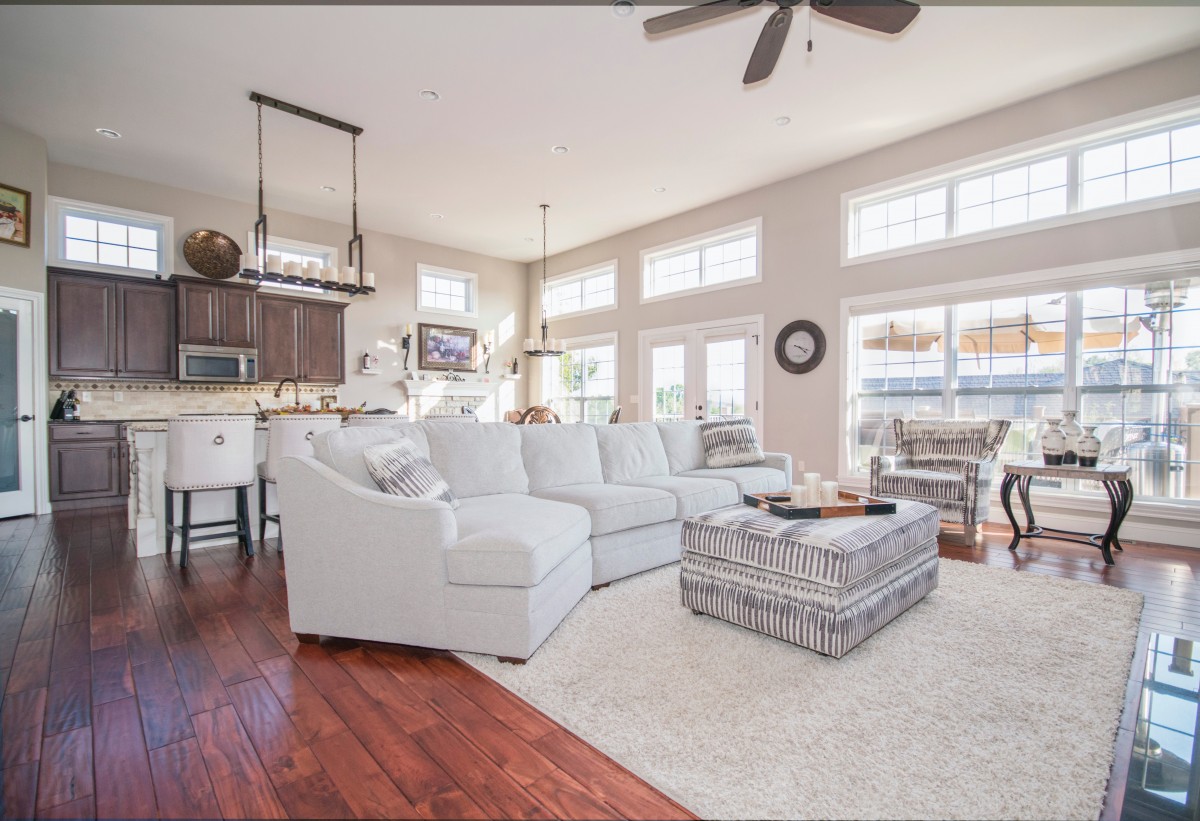
The choice of materials is the single most significant factor in a home’s environmental impact. Traditional materials often contain harmful chemicals and require energy-intensive production. The new wave of eco-conscious design is all about finding smarter, greener alternatives.
- A. Reclaimed and Recycled Materials: The phrase “one man’s trash is another man’s treasure” has found its perfect application in sustainable interior design. Designers are increasingly sourcing materials from deconstructed buildings and salvage yards. Reclaimed wood beams can be transformed into stunning furniture or flooring, old bricks can become a feature wall, and salvaged steel can be used for unique fixtures. This practice reduces the demand for new, raw materials and prevents usable items from ending up in landfills. It also gives a space a unique character and history, telling a story that new materials cannot.
- B. Bamboo and Other Rapidly Renewable Resources: Bamboo is a remarkable material for its incredible growth rate, requiring minimal water and no pesticides. It has a tensile strength comparable to steel, making it an excellent sustainable alternative for everything from flooring and cabinetry to furniture. Other rapidly renewable resources like cork, which is harvested from the bark of cork oak trees without harming the tree, and jute, a strong natural fiber, are also gaining traction for their durability and low environmental impact.
- C. Eco-Friendly and Non-Toxic Finishes: Many conventional paints, adhesives, and sealants contain Volatile Organic Compounds (VOCs), which are harmful to human health and contribute to poor indoor air quality. A cornerstone of eco-conscious interior design is the use of low- or zero-VOC alternatives. Designers are also opting for natural finishes like clay plaster, which is biodegradable and helps to regulate a room’s humidity, and natural waxes and oils to finish wood, which are non-toxic and beautiful.
- D. Recycled Glass and Plastics: Glass and plastic are two of the most common materials in our waste stream. Innovators are now transforming them into beautiful interior finishes. Recycled glass can be used for stunning countertops and tiles, while recycled plastics are being turned into durable and stylish furniture, textiles, and even insulation. This trend not only diverts waste from landfills but also gives these materials a new, valuable purpose.
- E. Bio-Plastics and Mycelium: The future of sustainable materials is moving towards “bio-materials.” Bio-plastics are being developed from natural sources like algae and seaweed, offering a biodegradable alternative to traditional plastics. Mycelium, the root structure of mushrooms, can be grown into any shape and then dried to create a lightweight, strong, and fire-resistant material for furniture and decorative objects. These materials show that we can move towards a circular, regenerative system where our interiors are part of a natural ecosystem.
Innovative Design Philosophies and Techniques
Beyond materials, the way a space is designed is undergoing a dramatic transformation. The goal is to maximize efficiency and minimize a home’s environmental impact from the very start.
- A. Biophilic Design: This philosophy seeks to connect building occupants with nature. It involves incorporating natural elements like abundant plant life, natural light, and views of the outdoors. The benefits of biophilic design are well-documented, including reduced stress, increased productivity, and improved well-being. This can be as simple as adding a living wall or an indoor garden, or as complex as designing a space with a seamless indoor-outdoor flow.
- B. The Circular Economy in Interiors: The traditional model of “buy, use, and dispose” is being replaced by the principles of the circular economy. This means designing interiors with products that can be easily repaired, reused, or recycled at the end of their life. Designers are prioritizing modular furniture, timeless pieces, and materials that are durable and easy to maintain. This approach reduces waste and promotes a more sustainable lifestyle.
- C. The Emphasis on Natural Light and Airflow: The most sustainable interiors are those that rely on natural forces. Designers are creating spaces with large windows and open floor plans to maximize natural light, reducing the need for artificial lighting. They are also designing for natural airflow and cross-ventilation, which can help to regulate a room’s temperature and improve air quality without the need for energy-intensive air conditioning.
- D. Minimalist and Purposeful Design: A minimalist aesthetic is inherently eco-conscious. It encourages a “less is more” philosophy, with a focus on quality over quantity. By curating a space with only the essential, purposeful, and well-made items, a designer can reduce waste and the consumption of resources. A minimalist home is also easier to clean, which reduces the need for harsh chemicals.
- E. Smart Space Optimization: In an era of shrinking living spaces, the art of space optimization is key. Designers are creating multi-functional and adaptable spaces that can be easily transformed to suit different needs. They are using clever storage solutions and modular furniture to ensure that every square inch of a home is utilized effectively, reducing the need for larger, more resource-intensive homes.
Harnessing Technology for a Smarter, Greener Home
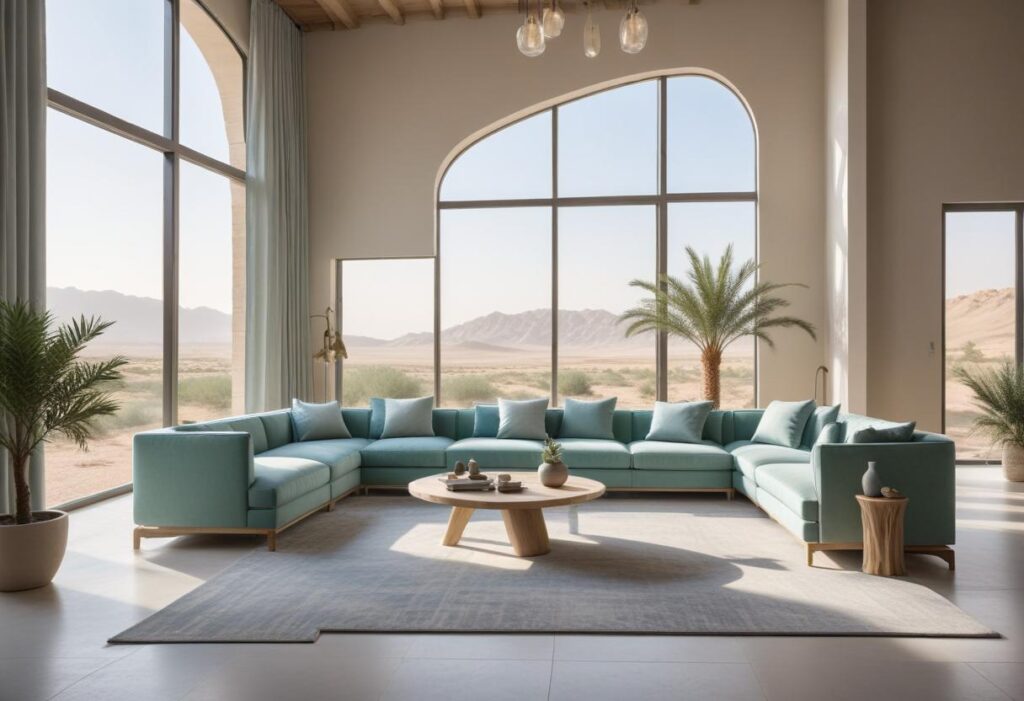
Technology is a critical enabler of the eco-conscious interior revolution. Smart systems are making homes more efficient and responsive, while renewable energy sources are powering them in a clean way.
- A. Smart Home Automation for Energy Efficiency: A smart home is an efficient home. A centralized automation system can integrate a home’s lighting, climate control, and window coverings. It can use sensors to automatically adjust these systems to maximize energy savings—for example, by turning off lights in an empty room or lowering the blinds to block out the sun’s heat. This level of automation is far more effective than manual adjustments and can lead to significant savings on utility bills.
- B. Advanced Air and Water Quality Monitoring: A truly healthy home is one with clean air and water. Eco-conscious interiors are now being designed with sophisticated sensors that monitor air quality, detecting pollutants, allergens, and carbon dioxide levels. The system can then automatically activate air purifiers or ventilation systems to ensure the air is clean and healthy. Similarly, smart water filtration systems can ensure that the water you drink is free of contaminants, with a minimal environmental footprint.
- C. The Integration of Renewable Energy: The most forward-thinking interiors are designed to work in harmony with renewable energy systems. This includes the seamless integration of energy storage batteries and a smart system that can manage a solar panel array, deciding when to use power from the grid and when to draw from the battery. This level of dynamic energy management makes a home a more resilient and sustainable part of the larger energy grid.
- D. Eco-Conscious Lighting: The lighting in a home accounts for a significant portion of its energy consumption. The new generation of eco-conscious interiors uses energy-efficient LED lighting. They are also incorporating circadian lighting systems that can be programmed to mimic the natural cycle of the sun, which has a proven positive impact on mood, sleep quality, and overall health.
Conclusion
The revolutionary eco-conscious interior design trends we’ve explored are not a fleeting fancy but a fundamental and necessary shift in how we conceive, design, and inhabit our living spaces. They are driven by a deep understanding that our homes have a monumental impact on the health of our planet and ourselves. From the transformative use of reclaimed and bio-materials to the intelligence of a smart, biophilic design, these innovations are proving that sustainability and high performance can go hand-in-hand. The future of interior design is not just about creating beautiful spaces, but about building a better, more resilient world, one room at a time.
The challenges are significant, including the initial cost of some materials and the need for new skills and technologies. However, the long-term benefits—reduced energy consumption, lower maintenance costs, and a healthier living environment—far outweigh the initial hurdles. For a homeowner, this means a more comfortable, energy-efficient, and valuable home. For the planet, it means a tangible step towards mitigating climate change and preserving our natural resources. The ultimate goal is to create a built environment that is regenerative, a world where our homes are not just passive consumers of energy but active contributors to a healthier ecosystem. This revolution is already in motion, and every sustainable choice we make, from the materials we select to the technologies we adopt, brings us closer to a truly green and vibrant future.

